Sun Prairie Canning Company
Introduction
Text-to-speech Audio
The Sun Prairie Canning Company was one of the largest employers in Sun Prairie during most of the 20th century. The company was founded in 1900 and struggled in its early years, but after a financial reorganization the company was acquired by Jacob Fuhremann in 1909, who established the plant at the current Market Street site in 1912. Canning operations were seasonal, generally occurring from the end of the harvest around August through September. Over the years, up to 150 people were employed during canning operations, packaging primarily peas, but also corn, lima beans, tomatoes, and string beans. A major remodel and modernization of the cannery in 1943 enabled the site to continue operations through periods of cannery factory consolidation in successive decades. The cannery operated as the Stittville Company, Oconomowoc Canning Company, Stokely USA and Chiquita Brands before closing in 2000, exactly one hundred years from its founding. Added to the National Register of Historic Places in 2004, the main cannery building was redeveloped while maintaining its original, industrial form, and is now publicly accessible as the home of the Nitty Gritty restaurant.
Images
Original Cannery - circa 1942
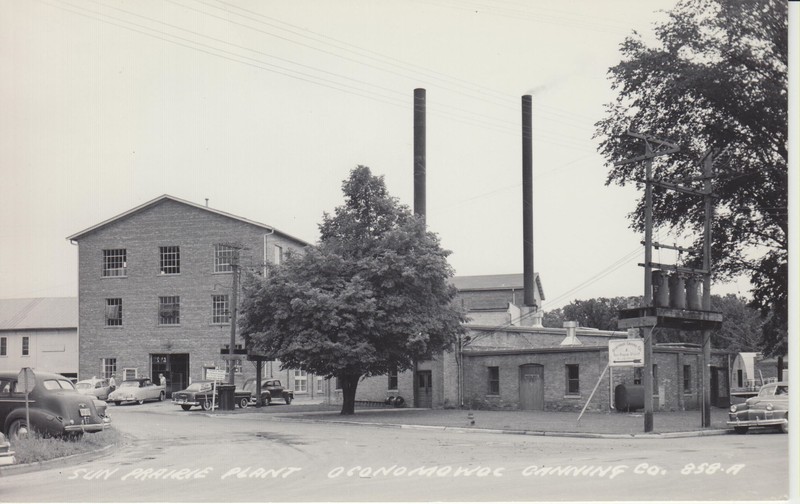
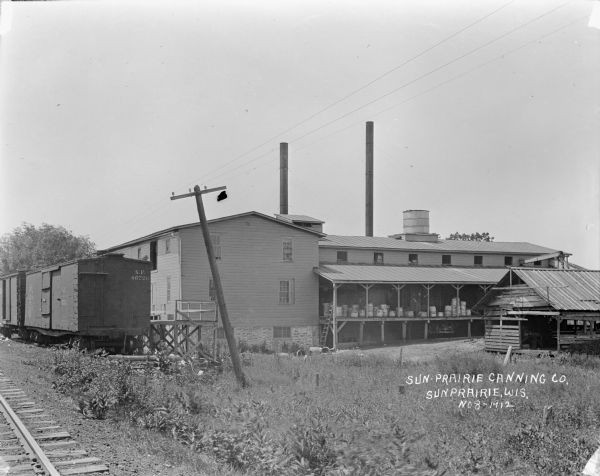
Redeveloped Main Cannery Building
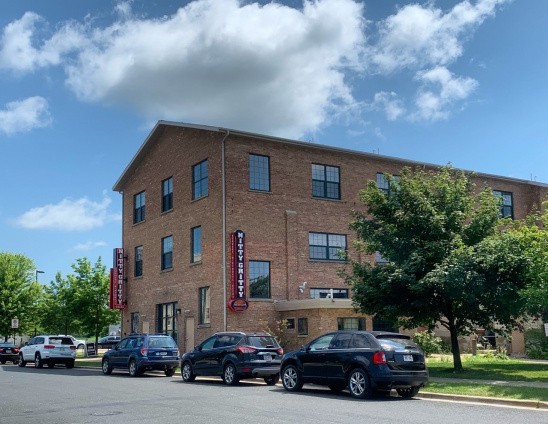
Picking debris from peas
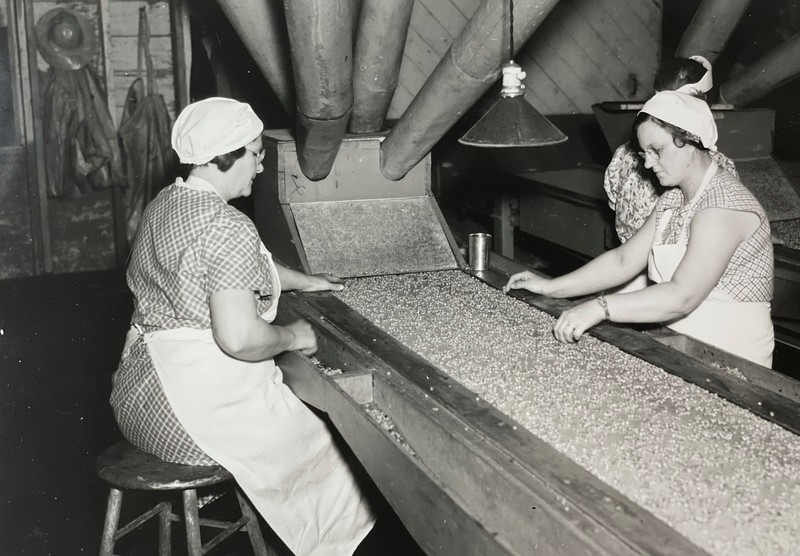
Cannery Interior - Early Days
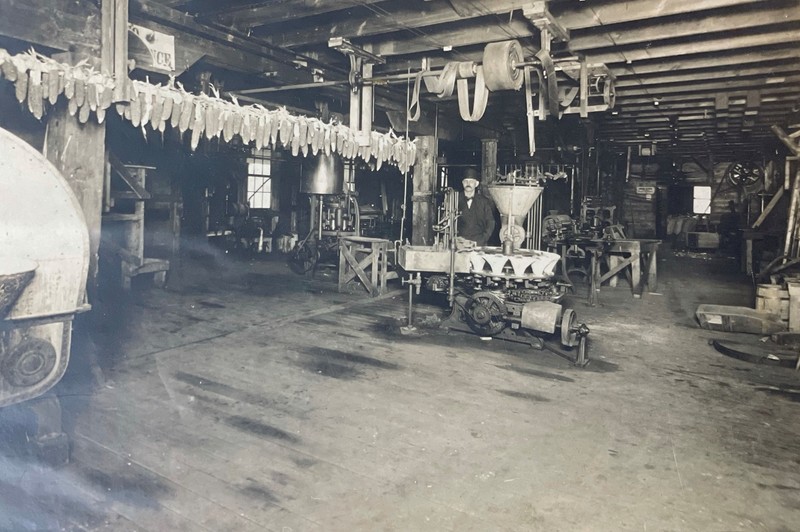
Canning Machinery
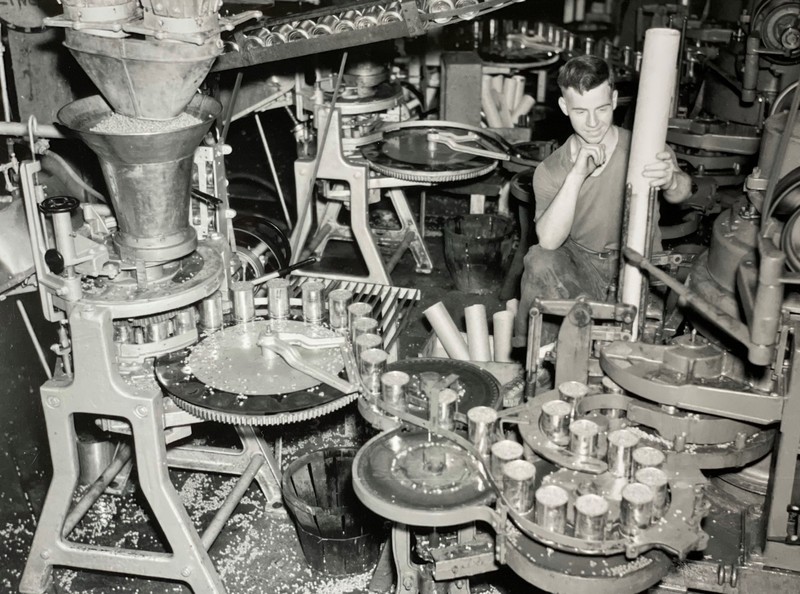
Backstory and Context
Text-to-speech Audio
The Sun Prairie Canning Company was founded in 1900 as a cooperative to help local farmers expand the shipment of their produce to outside markets. In its first year, the factory canned sweet corn, peas, tomatoes, kidney beans, pork and beans, beets, and sauerkraut. However, a poor crop in 1901 and lack of sufficient capital led to the closure of the plant after the harvest season. After a financial reorganization in 1905, the company was acquired by Jacob Fuhremann in 1909, who added the business to other canning interests he held. Subsequently, Sun Prairie became the focus of Fuhremann’s operations and also his home, and he built an expanded canning plant on the Market Street site in 1912 (current location of the Nitty Gritty).
The first 3 decades of the 20th century were a boom time for canneries in Wisconsin. When the Sun Prairie cannery was built in 1900, only 15 canneries existed in the state. However, by 1930 a total of 169 canning factories had been built. Consolidation of plant ownership ensued, and the Sun Prairie cannery passed through a period of ownership by the Stittville Company before being acquired by the Oconomowoc Canning Company in 1928.
The entry of the United States into WWII in 1941 placed a large demand on the need for canned food shipments, while at the same time, local manpower was drained for the war effort. During 1943, up to 500 workers were being employed daily in field and factory work taking care of the ripening pea crop. Considering Sun Prairie’s entire population at the time was roughly 1,700 people, an effort of this size required outside help, with significant numbers of additional workers arriving from Jamaica. A further source of labor were German Prisoners of War (PW) who had been captured in the European war theatre and were housed in Waterloo and trucked to the local fields and Sun Prairie’s canning factory itself. In total, nearly 13,000 PW's were located seasonally or year-round in 38 "branch" camps like Waterloo, scattered across Wisconsin during the war.
During the war years, very strict limits were placed on the allocation of building materials. However, food production was a high priority for the country and fortunately for Sun Prairie, the local cannery was selected for a major upgrade during the winter of 1943. The clapboard-clad frame construction factory building of 1912 was entirely enclosed within a new brick-walled shell as is observed on the building today. The shell rested on a new poured concrete foundation, and the plant was equipped with 1940s state-of-the-art equipment for enlarged canning capacity.
With a modern canning factory, Sun Prairie was well positioned in the canning industry at the end of WWII and withstood cannery site consolidations in later decades. Temporary employment in the plant during the canning season became a rite of summer for many generations of Sun Prairie residents and migrant workers. The Oconomowoc Canning Company continued to operate the facility and in 1953, was the principal sponsor for the first Sun Prairie “Corn Fest” Sweet Corn Festival, an annual Sun Prairie tradition that continues to this day. In 1983, Oconomowoc Canning assumed the name of Stokely Canning (later Stokely USA) when it purchased the 6 Stokely canning plants to complement the 6 it already owned in Wisconsin. Ultimately, Chiquita Brands International purchased Stokely USA in 1997 and in 2000, the Sun Prairie canning facility was closed in favor of larger and more modern facilities elsewhere.
In the early 2000s, the City of Sun Prairie pursued redevelopment of the entire cannery site and a neighboring porcelain factory site as part of a $20m “Cannery Square” downtown revitalization initiative. All of the canning factory outbuildings were razed, but the main cannery building was renovated and is now the home of the Nitty Gritty restaurant as well as a number of apartment residences. Cannery Square as a whole features approximately 127 residential homes and apartments, retail stores and a central plaza that now forms the heart of downtown Sun Prairie.
Sources
Heggland, Timothy F. Fuhremann Canning Company Factory – NPS Historic Place Submission, May 18th 2004. Accessed May 3rd 2022. https://catalog.archives.gov/id/106780425.
Klein, Peter Michael. Sun Prairie's People - Shadows and Dreams. Sun Prairie, Wisconsin. Sun Prairie Historical Library and Museum, 1993.
Cowley, Betty. Stalag Wisconsin: Inside WWII prisoner-of-war camps. Oregon, Wisconsin. Badger Books, 2002.
